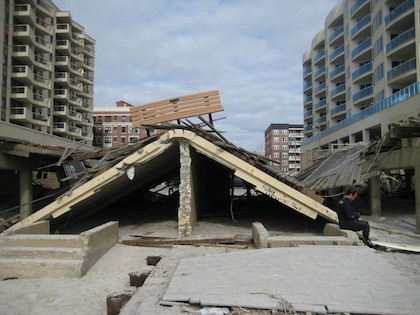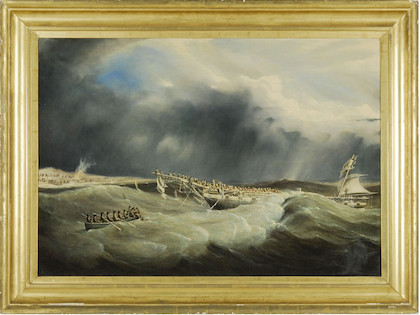Disaster, 175 years apart
I was on a mission a few days after Sandy hit when I drove down to Lincoln Boulevard in Long Beach. I wanted to compare the current storm scene to a painting I own of a storm and shipwreck at the same spot 175 years ago. It was the wreck of the tall ship Mexico, in January 1837. What I found was devastation.
The boardwalk at Lincoln Boulevard was in ruins. Powerful waves had tossed the boards around like matchsticks, and had bent the steel railings. It had knocked a huge concrete slab off its moorings and bent it like a playing card. The adjacent, seven-story condo, the “Aqua,” still advertised units for sale, “from $999,000,” but the lower portions of the building were ruined.
The 1837 oil painting that I own is “The Wreck of the Mexico” by James Fulton Pringle. The painting shows Long Beach right where Lincoln Boulevard is today, and it highlights the awesome power of the sea. In the painting, 115 people are about to freeze to death just 200 yards from shore when only one rescue boat braved the storm. Walt Whitman provided a moving description of the scene in the poem “Sleepers” in “Leaves of Grass.”
The chief difference between the Long Beach of 175 years ago and today is that no one back then would risk living on a barrier island that could be swept over by seawater every fifty to one hundred years. In fact the nearest house was in Baldwin. It was there that a barn was used as a mortuary for the dead.
Art Mattson is the Historian of the Village of Lynbrook and the author of two books: “The History of Lynbrook” and “WATER and ICE: The Tragic Wrecks of the Bristol and the Mexico on the South Shore of Long Island,” available on ”Amazon.com and at Lyn Gift Shop and Hallmark Store on Atlantic Avenue in Lynbrook.









